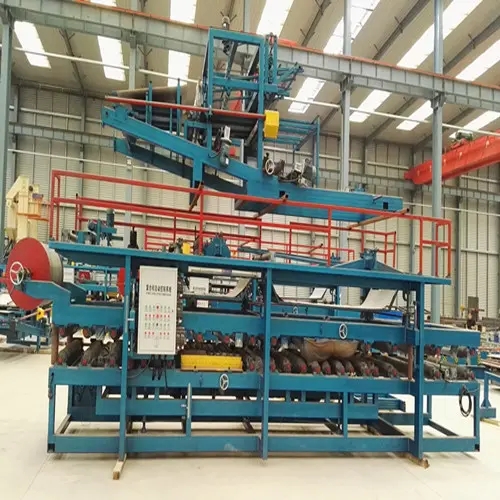
Double Layer Roof Sheet Forming Machine Revolutionizing the Roofing Industry
The construction industry has continually evolved with advances in technology, and one of the noteworthy innovations is the double layer roof sheet forming machine. This sophisticated machine streamlines the production of versatile roofing sheets, effectively catering to the growing demand for durable and aesthetically pleasing roofing solutions. In this article, we will explore the functionality, advantages, and applications of the double layer roof sheet forming machine.
Understanding Double Layer Roof Sheet Forming Machines
A double layer roof sheet forming machine is a specialized machine designed to produce two different types of roofing sheets simultaneously. It operates by feeding metal coils into the machine, which then shapes and forms the material into desired profiles using various rollers. The design of this machine allows manufacturers to create roofing sheets with different thicknesses, widths, and profiles, offering tremendous versatility in roofing solutions.
One of the defining features of this machine is its capability to form two distinct layers in one pass. Traditional single-layer machines can produce only one type of sheet at a time, significantly increasing production time and costs. In contrast, the double layer forming machine optimizes production efficiency by consolidating processes, which is especially beneficial for manufacturers dealing with high volumes of orders.
Advantages of Double Layer Roof Sheet Forming Machines
1. Cost Efficiency By producing two types of roofing sheets in a single operation, manufacturers can save on labor and operational costs. This efficiency not only reduces production expenses but also lowers the overall price of the end products for consumers.
2. Space Saving The double layer roof sheet forming machine occupies less floor space compared to having multiple machines for different roofing profiles. Manufacturers can maximize their production capacity without requiring additional space for separate machines.
3. Product Versatility The machine can cater to diverse client needs by producing a wide range of profiles, such as trapezoidal, corrugated, or tile-like sheets. This flexibility allows manufacturers to adapt quickly to market demands and customer preferences.
4. Improved Material Utilization With the ability to produce multiple products simultaneously, manufacturers can optimize raw material usage, reducing waste and enhancing sustainability in their operations.

5. Higher Production Speed Advanced technology and design ensure that double layer machines operate at higher speeds while maintaining quality. This helps businesses meet tight deadlines and fulfill large orders efficiently.
Applications of Double Layer Roof Sheet Forming Machines
Double layer roof sheets produced by these machines are increasingly used in various construction projects, both commercial and residential. Their durability and lightweight nature make them suitable for
- Industrial Buildings Warehouses and manufacturing facilities benefit from strong, weather-resistant roofing solutions that can withstand harsh conditions.
- Agricultural Structures Farms and animal housing often utilize these sheets for roofs due to their resilience and insulation properties.
- Residential Roofs Homeowners favor these sheets for their aesthetic appeal and energy efficiency, which can contribute to lower heating and cooling costs.
- Carports and Sheds The versatility of double layer roofing allows for quick construction of ancillary structures, enhancing property functionality.
- Urban Development Modern architecture often incorporates these roofing solutions to achieve a balance of form and function, catering to contemporary design trends.
Conclusion
The double layer roof sheet forming machine represents a significant step forward in roofing technology, offering numerous advantages that streamline production processes, reduce costs, and enhance product versatility. As the roofing industry continues to demand innovative solutions, this machine stands out by meeting the needs of various applications while maintaining high standards of quality. Manufacturers embracing this technology will undoubtedly gain a competitive edge in the ever-evolving construction landscape, meeting the diverse requirements of customers today and into the future.